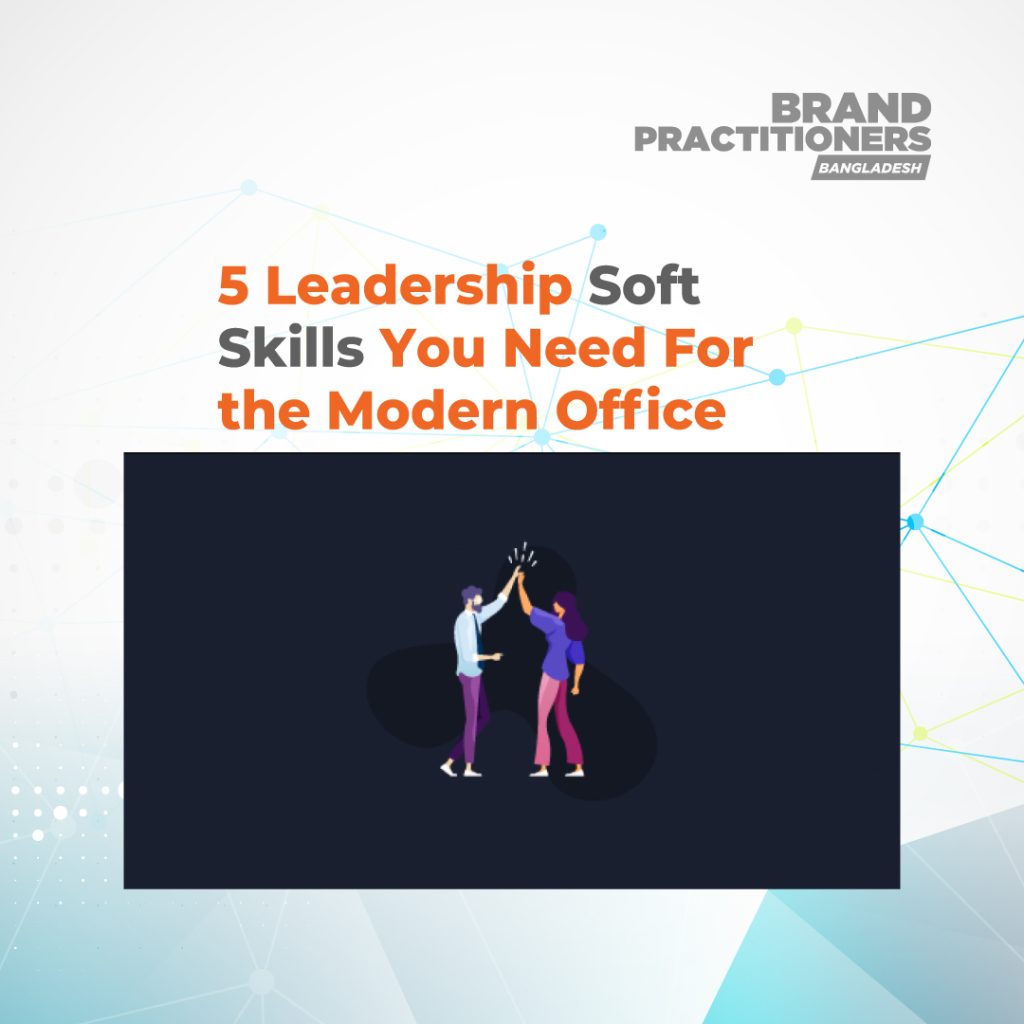The difference between a boss and a leader has inspired many a meme over the years. In our collective unconscious, bosses are the epitome of overbearing authority. Interested only in having their way, not so much in actually helping people. Leaders on the other hand enjoy a more favorable opinion. They are looked upon as people who inspire others through initiative, encouragement and trust. If one were to ask what might separate a boss and a leader (both get things done, after all) then it can be answered simply with – “leadership soft skills.” While the archetypical leaders understand the importance of soft skills, their bossy counterparts will usually overlook them, preferring a more direct approach.

Here are five essential leadership soft skills that can help you become better at your job:
Listening
Yes, it’s actually a skill. Leadership is often associated with instructiveness. Leaders tell others what to do, after all. But part of their job also involves making good decisions for which they need high quality input. It’s practically impossible for just one person to come up with the most efficient solution every single time, after all.
Even so, listening is probably one of the hardest things to do. Says Hal Gregerson, executive director of the MIT Leadership Center – “It’s really hard to walk into a conversation without my agenda being written on my forehead and your agenda written on yours,” he says. “Unfortunately with the hectic, chaotic, complicated pace of work life today, people are even more committed to getting their own agenda accomplished.”
Empathy
Empathy means to understand and relate with the feelings of others. While this sounds a lot like sympathy, it isn’t. To be empathetic, you need to be able to discern a person’s needs and how their feelings are shaping their perceptions. You don’t just have to go on agreeing with them all the time as you would when you’re being sympathetic.
Development Dimensions International has gone so far as to call empathy as the most important leadership soft skill and for a good reason, too. Empathy leads to a more loyal, engaged staff. Conversely, lack of trust and appreciation from higher ups is often a primary reason why good people leave.
At the core of empathy lies the quality to understand that the people around you are facing challenges, too. They won’t just magically pluck the results their leader wants out of the blue, but will experience hardships for which they might need a helping hand.
Emotional Intelligence
The queer foster sibling of intelligence quotient, emotional intelligence is often written of as fuzzy, feel good, new age rhetoric that has little workplace significance. Nothing can be further from the truth. EI, as it is also known is an important leadership soft skill that can help a leader both manage his/her own emotions, and those of people around them.
Author and science journalist Daniel Goleman who has written extensively on EI says – “[n]o matter what leaders set out to do—whether it’s creating a strategy or mobilizing teams to action—their success depends on how they do it. Even if they get everything else just right, if leaders fail in this primal task of driving emotions in the right direction, nothing they do will work as well as it could or should.”
In other words, leaders have to channel team-wide motivation towards goal fulfillment. Since motivation is an emotional quality, they need to navigate the expectations and feelings of others in order to ensure everyone remains committed to the task at hand.
Creativity
The role of creativity as a leadership soft skill cannot be underestimated, particularly in today’s business environment where competitive differentiation is so important. Defined as using imagination and original ideas to create something, creativity essentially boils down to finding new ways to make use of existing resources.
Leaders will find themselves being looked upon for solutions, and simply reading out the rule book or giving cliched advice may not always work. Creativity is often a product of trial and error. You come across a problem, create a list of possible solutions, try them out one by one and see which one works. Obviously, doing so runs the risk of misinterpreted but it shouldn’t be taken to heart.
Service Mindedness
Let’s face it – a part of us wants to lead because it gives us the opportunity to assert our wills. But there is another way to look at leadership, too. First coined by Robert K. Greenleaf in a 1970 essay titled – “Servants as Leaders”, a servant leader is a philosophy in which the main goal of the leader is to serve. While seemingly counterintuitive (aren’t leaders served?), it’s not unheard of. For instance, the meaning of the word “samurai” in Japanese is to serve, even when the caste it referred to were feudal nobility in ancient Japan.
The idea of servant leadership essentially revolves around putting those who look up to you before you. These can include your team members, your customers, shareholders and other stakeholders. The difference between a servant-first and leader-first is that the former is primarily interested in helping those he/she cares about to grow. In contrast, leader-first will exercise their power to achieve their own ends.
By serving your own team, you can set a better example. Ego-driven decision making (NOT to be underestimated) is replaced by a feeling of trust and gratitude. When your team members see you as someone trying to help them, the odds are that they will reciprocate by helping you as well.
Read More:












